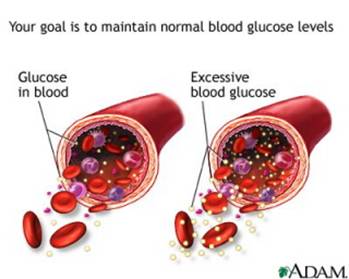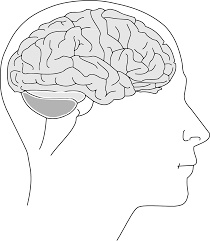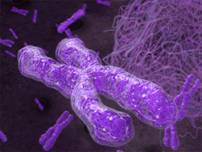
EFA Functions
(4) EFAs affect every system in the body!

EFAs reduce blood sugar levels / INSULIN resistance

EFAs for brain and nervous system
- Omega-3 fats EPA & DHA affect our mood, intelligence and behaviour

EFAs maintain cell membrane integrity in CNS
Central Nervous System (CNS) consists of your brain (your body’s main information processor) and an estimated 100 billion nerve cells. Nerve cell function in the CNS is critically dependent on proper CELL WALL FLUIDITY, FLEXIBILITY and PERMEABILITY, provided by the presence of EFAs
A high percentage of brain and nervous system cells are EPA and DHA
A normal brain’s fat is 25% DHA. EFAs make up 20% of nerve cell membranes.
Brain function
Omega-6 AA comprises 12% of the brain’s total fat, and in balance with Omega-3 has a positive effect on all brain functions.


Brain cell communication
DHA helps to hold the cell’s receptors in place in the nerve relay stations (synapses) so that neurotransmitters can “dock” there. This enables brain cells to communicate properly, which prevents nervous disorders, and also affects memory and learning ability.

Intra-nerve communication
EPA assists in communications within nerve cells – important in alleviating depression.

Brain development
DHA is essential for normal brain development and is critical for a baby during pregnancy and after birth
Mood control
DHA raises SEROTONIN (mood hormone) levels. Clinically depressed people have 35% less stored DHA.
EPA can lower chemicals (TNF-α and Interleukin-1ß) – whose elevated levels are associated with severity of depression.

Stress alleviation
DHA helps modulate stress levels by supporting the high energy needs of the adrenal glands and their production of adrenaline.
Some brain/ nerve related conditions caused by DHA / EPA deficiency:
| • LACK of MEMORY RETENTION | • LEARNING DISABILITY | • ALZHEIMER’s |
| • ADD / ADHD | • NERVOUS DISORDERS | • DEPRESSION |
| • SCHIZOPHRENIA | • DYSPRAXIA | • AGGRESSION |
| • AUTISM | • PARKINSON’S DISEASE | • DYSLEXIA |
EFAs are anti-cancer

Omega 3 EPA:
• Inhibits COX-2 enzyme which promotes breast cancer Pubmed
• Activates a type of cell membrane receptor which can shut down proliferative
activity in a variety of cells including breast cells called peroxisome proliferator-activated
receptor PPAR-α. This increases expression of tumor suppressor genes BRCA1 and BRCA2, which when functioning normally, help repair damage to DNA.
EFAs control inflammation levels
EPA / GLA reduce inflammatory response
- Affects joint health.
Helps against problems such as arthritis, gout, and osteoarthritis - Reduces pain
- Prevents leaky gut syndrome and subsequent food allergies
- Prevents inflammatory bowel
disease (IBD). E.g. ulcerative colitis, Crohn’s disease - Prevents allergies. E.g. hay fever, Asthma,
Allergic skin conditions (E.g. hives, eczema), sinus Infections, food allergies
EFAs help make joint lubricants and are required to build and deposit bone material
EPA / DHA switch off collagen-degrading enzymes that break down joint cartilage. By cushioning bones, collagen-rich cartlilage prevents them from rubbing together and becoming inflamed and painful, which is the crux of osteoarthritis.

EFAs for cardiovascular health
Slippery property affects blood clotting / Prevents thrombosis.
EFA prostaglandins reduce platelet stickiness. Red blood cell membranes contain 45% phospholipids.
Control Blood Pressure. Omega-6 and Omega-3 fatty acids in the right ratio prevent /lower high blood pressure. Also, Omega-3 DHA supports the adrenal glands in their production of the fluid-controlling hormone ALDOSTERONE.
Stimulate Blood Circulation / Prevent Varicose Veins and Raynaud’s Disease

Regulate Blood triglycerides Omega-3 fat lowers high triglycerides by up to 65%.
Lower LDL Cholesterol /Prevent Hardening of the Arteries. Extra cholesterol is hooked up (esterified) to EFAs for transport in the bloodstream to the liver, to be changed into bile acids. This lowers elevated blood cholesterol significantly.
Support artery wall elasticity

Help generate electric currents for a properly sequenced heart beat / Prevent arrhythmia. Heart tissues require EFAs to function properly.
EFAs support kidney function / Reduce water retention
EPA produces prostaglandins promoting kidney excretion
Eicosanoids PG E and A increase urinary flow
The role of eicosanoids in renal diseases – potential therapeutic possibilities

EFAs support high energy adrenal gland function
EFAs for weight management
Anti-thyroid effect.
PUFAs block thyroid hormone secretion, its movement in the circulatory system, and the response of tissues to the hormone.
Research shows that polyunsaturated vegetable oils promote weight gain. In the late 1940s, it was found that corn and soy beans have an anti-thyroid effect enabling animals to be fattened at low cost. These PUFAs are now fed to animals, e.g. pigs, to fatten them and cause their usually, predominantly saturated fat to become polyunsaturated.
EFAs for growth and repair
EFAs required for normal growth and wound repair

EFAs regulate and energize cell division. EFAs form part of the membrane of the newly formed healthy cell. DHA and AA regulate nuclear transcription factors

EFA eicosanoids (particularly EPA) may be involved in building skeletal muscle mass. And countering muscle atrophy in muscle-disuse or with cachexia (wasting away) in cancer. McGlory et al, 2019
EFAs Essential for hair and nail growth.

EFAs make hair shiny and healthy looking / Strengthen
nails.

EFAs for immune system health

Excessive omega-6 fat suppresses the immune system.
EPA and DHA promote the immune system's T- Helper cells
T-helpers are the “Generals” of the immune system. T-HELPER cells organize the production of antibodies to protect the body from bacteria and viruses, prevent allergies.
EPA and GLA required for balanced eicosanoid formation
Supports healthy immune responses. Eicosanoids (Cells’ “First Responders”), such as prostaglandins and leukotrienes, act like localized hormones.
EPA counters the strong immuno-suppressive eicosanoids. E.g. those derived from Omega-6 AA.
Prostaglandins derived from GLA are immuno-stimulating. Via activation of T-Helper cells.
EFAs discourage access of foreign invaders to the inside of the cell
Most opportunist infections get inside cells
EFAs attract OXYGEN. Unfriendly to bacteria.
EFAs maintain cell membrane integrity
Protects the cell. Just as making your house with good quality materials mixed in proper proportions, will keep out wind, rain, snow, cold and insects.
EFAs escort toxins from body
EFAs react with toxic substances and disperse them from the body via the skin, intestines, kidneys and lungs.
EFAs and reproductive system

DHA provides high energy support for ovaries and testes. For effective production of ESTROGEN and Testosterone.
EFA prostaglandins modulate pain. Ease menstrual pain / Prevent cramping in menstrual cycle.
In pregnancy:
• EPA helps modulate uterine contractions. Controlled by EPA-derived prostaglandins.
• DHA is essential for baby’s brain development;
• DHA is required for sperm formation
EFAs for skin care
EPA, DHA and GLA are cosmetic edibles
EFAs work their magic on the skin from the inside out

Skin Cancer. Omega-3 protects skin from cancer due to UV exposure. Natural Omega-3 fatty acids in cell membranes resonate with, absorb and utilize the sun’s rays to create energy by attracting oxygen to the cell. Tan better, burn less.

EFA-rich oils should not be applied to light-exposed skin. With exposure to light and air. they would oxidize (go rancid);
Complexion. EFAs produce smooth, velvety skin, protecting against moisture loss. Dry skin is a good external indicator of EFA deficiency.
Dandruff. EFAs eliminate dandruff.
Skin Problems. EPA and GLA reduce inflammatory skin disorders (e.g. eczema, psoriasis) • Topical application of borage oil reduces symptoms of atopic dermatitis in double-blind placebo-controlled study. Kanehara, 2007
• Oral supplementation with borage oil reduces hyperproliferation of skin cells.
• Oral evening primrose oil used against psoriasis and atopic eczemaand

EFAs in eye and vision health
More than HALF of the retina’s fatty acids are DHA. If available, DHA is replaced every 10 days in the retina. Affects Retinal development and improves Visual ability.
EPA / DHA lowers risk of age-related macular degeneration

EFAs for digestion
- EFAs activate bile flow for fat digestion with toxic substances and disperse them;
- Carry fat-soluble vitamins (A, D, E and K) in bloodstream.
- Slow carbohydrate absorption (balancing blood sugar levels).
References
Kanehara S, Ohtani T, Uede K, Furukawa F (2007). “Clinical effects of undershirts
coated with borage oil on children with atopic dermatitis: a double-blind, placebo-controlled
clinical trial”. J Dermatol. 34 (12): 811-5. PubMed
Chris McGlory, Phiip C. Calder, Everson A. Nunes (2019 Sep 6) The Influence of Omega-3 Fatty Acids on Skeletal Muscle Protein Turnover in Health, Disuse, and Disease. Front. Nutr. Link



















